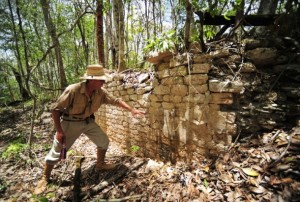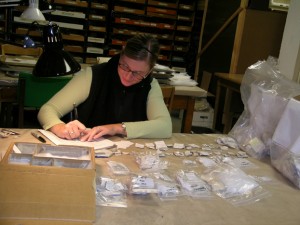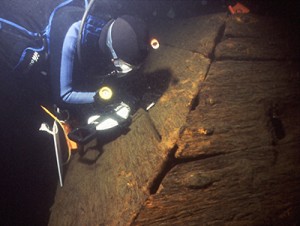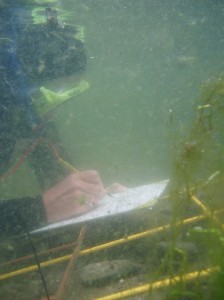When most people think of archaeology, they probably picture someone digging in a jungle searching for hidden treasures, or perhaps uncovering the tomb of some great pharaoh in Egypt. Sitting in a well-lit and comfortable lab re-bagging artifacts while listening to music usually doesn’t factor into the adventurer stereotype that many people may assume is what archaeology is all about. Working in a lab may even sound incredibly dull and uninteresting. However, this simply isn’t the case, and I can attest to the fact that lab work can actually be incredibly interesting and fun- while still fulfilling its primary purpose of processing, identifying, and analyzing artifacts.
Though originally our groups had no idea what to expect from our two-hour long lab work session, we took to our task of re-labelling and re-bagging artifacts fairly easily and quickly. The work was relatively simple when we got into a rhythm, but still managed to hold our attention. Even the seemingly endless fragmented animal bones were exclaimed over when we were told what part of the body they came from. Teeth, ankle bones, even bits of turtle shell were the source of many “Cool!”s and “Wow!”s. There was never a moment of boredom, and the time flew by because we were constantly learning more and more about the artifacts we were handling.
Despite being genuinely fascinating, lab work also serves several important purposes. As was the case with the artifacts that we were working with, sometimes mistakes in labelling or sorting are made in the field and accounted for and fixed in the lab. For instance, within bags that were predominantly mammal bones, we sometimes found a stray fish bone or bit of shell that had to be removed when we re-bagged the contents. Lab work is also important because it allows the archaeologist to clean and then more closely analyze the
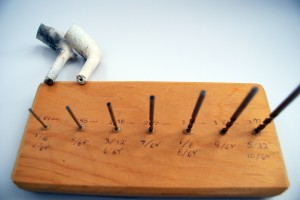
Drill bits can be used in the lab to find the diameter of a pipe stem and thus determine what time period the pipe is from.
artifacts. An artifact may be wrongly identified in the field for a number of reasons, and, upon analysis in the lab, be properly identified and dealt with accordingly. It may also prove difficult to determine what time period an artifact is from in the field, and access to special equipment, texts, or other tools that aren’t available during field work may be necessary.
Even though lab work may initially sound dull when juxtaposed against the “adventures” of field work, processing artifacts can, in fact, be just as enjoyable and interesting as finding them in the first place. Lab work allows the archaeologist to learn more about the artifacts they’ve found so they can accurately analyze them within the context of history. Because of this, lab work is a major pillar of archaeology that is necessary to understanding history to the best of our ability.
Works Cited:
Image 2: http://www.uwlax.edu/sociology/archaeology/resources.htm
Image 3: http://nmscarcheologylab.wordpress.com/2011/01/26/spotlight-on-pipe-stems/
“Archaeological Methods.” Alabama Archaeology. N.p., n.d. Web. 10 Nov. 2013. <http://bama.ua.edu/~alaarch/Methods/>.
“The Dig: Adventures in Archaeology.” ThinkQuest. Oracle Foundation, n.d. Web. 9 Nov. 2013. <http://library.thinkquest.org/J001645/htdi.shtml>.
Tiver, Donald. “Becoming a Well-rounded Archaeologist.” Day of Archaeology. N.p., 29 July 2013. Web. 9 Nov. 2013. <http://www.dayofarchaeology.com/becoming-a-well-rounded-archaeologist/>.

